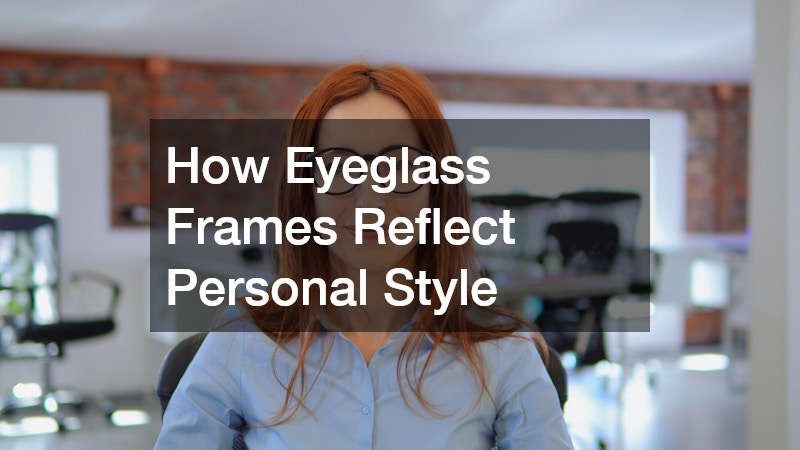
This article explores the intricate relationship between eyeglass frames and personal style, highlighting how frames can serve as a crucial element of self-expression. In a world where fashion becomes a beacon of individualism, eyewear stands out as a transformative accessory capable of redefining one’s appearance. A pair of eyeglasses can epitomize creativity, professionalism, or even quirkiness, making them an essential part of personal branding.
What Factors Influence the Choice of Eyeglass Frames?
The choice of eyeglass frames hinges upon several key factors that play a significant role in the decision-making process. One of the primary considerations is face shape; understanding whether one has an oval, round, square, or heart-shaped face can help in selecting frames that harmonize with facial features. Moreover, personal preferences, including comfort and style inclination, contribute to the final decision, allowing individuals to feel confident in their choice.
Along with face shape and individual preferences, current fashion trends also heavily influence frame selection. As eyewear fashion evolves, what is deemed stylish continually shifts, drawing inspiration from pop culture, celebrity endorsements, and social media. Individuals may find themselves gravitating towards frames that are not only functional but also resonate with the prevailing aesthetic trends.
Finally, lifestyle factors such as profession, activities, and even age can impact frame selection. A busy professional may opt for more classic, understated frames that convey seriousness and reliability, while a student might choose something quirky or colorful to express their youthful exuberance. Balancing all these factors dictates the ideal pair of frames for each unique individual.
How Do Different Frame Styles Convey Different Personalities?
The styles of eyeglass frames available today are diverse, ranging from the iconic cat-eye to the classic round frames. Cat-eye frames, for instance, often convey a bold, confident personality, appealing to individuals who wish to make a fashion statement. This style’s vintage appeal can evoke a sense of nostalgia while simultaneously reflecting a modern sensibility.
In contrast, round frames may suggest a more artistic or unconventional persona. Typically associated with intellectualism, these frames are favored by creatives and free spirits alike. The selection of such styles can convey openness and warmth, making them a popular choice for those seeking to highlight their individuality.
Angular frames, with their sharp edges, are indicative of modernity and sophistication. They tend to suit individuals who embody a professional demeanor or prefer a minimalistic approach to fashion. The choice of these bold shapes allows wearers to express strength and authority, reinforcing the notion that eyeglass frames can serve as a silent communicator of personality traits.
What Role Do Color and Material Play in Frame Selection?
Color is a pivotal element in the selection of eyeglass frames, as it can dramatically affect one’s overall style. Cool tones like blues and greens tend to evoke calmness, whereas warm colors like reds and oranges may signify vibrant energy and passion. Choosing the right color can enhance the wearer’s complexion and further convey selected moods and attributes.
Material also plays a significant role in frame selection—different materials provide varying levels of durability, comfort, and visual appeal. Lightweight materials like titanium offer superior comfort for all-day wear, while acetate frames provide a bold and colorful aesthetic. The choice of material can reflect not just personal style, but also practical considerations like activity levels and daily habits.
Finally, the combination of color and material speaks volumes about personal identity. A pair of striking, metallic blue frames might attract attention, signaling creative flair and trend-consciousness, while understated black frames may suggest professionalism and reliability. The careful selection can ultimately enhance self-expression and influence how others perceive one’s personality.
How Has Eyewear Fashion Evolved Over the Years?
Eyewear fashion has undergone significant transformations throughout history, reflecting broader societal changes and cultural movements. In the early 20th century, eyeglasses were primarily regarded as corrective tools, often lacking in style and variety. However, as time progressed, the perception of eyewear began to shift, with designers introducing innovative styles that emphasized aesthetics as much as practicality.
The 1960s and 1970s marked a turning point in eyewear fashion, with bold styles like oversized frames and funky geometric shapes coming into vogue. This period highlighted how eyewear could serve as a powerful fashion statement, influenced by pop culture and lifestyle choices. Icons like John Lennon and Audrey Hepburn helped propel eyeglasses into the realm of high fashion, breaking the stigma that once surrounded them.
By the turn of the 21st century, eyewear became a fully-fledged fashion accessory. Designers began crafting finely detailed and uniquely shaped frames, catering to the growing demand for personalized style. Today, eyewear is no longer solely a functional item but a reflection of individual taste, making it an integral aspect of personal style and identity in the contemporary fashion landscape.
Eyeglass frames not only serve a functional purpose but also act as a powerful form of personal expression, encapsulating individual style and identity. The intricate relationship between frame selection, personal style, and societal influences speaks volumes about the role that eyewear plays in our lives. As styles change and evolve, the connection between eyeglass frames and personal identity deepens, becoming an enduring aspect of self-expression in the modern world.




